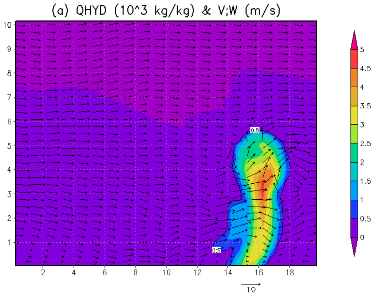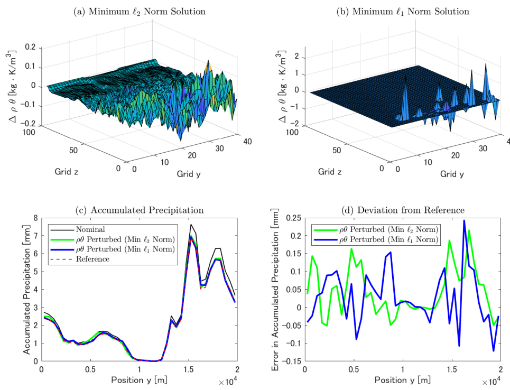Progress Report
Artificial generation of upstream maritime heavy rains to govern intense-rain-induced disasters over land (AMAGOI)[1] Control Theory
Progress until FY2024
1. Outline of the project
There are three hurdles in manipulating weather. First, we need to find effective interventions. Careful selection of interventions is necessary, as an ill-planned intervention may not necessarily produce the desired outcome. Secondly, interventions must be feasible. Weather, being large-scale, may require enormous amounts of energy to control, while there are also constraints on the amount of energy we humans can expend. Finally, the intervention must be computable; overcoming the large-scale nature of weather phenomena, interventions must be computed in the short time between when heavy rainfall damage is predicted and when it occurs. Althouh the control theory can be essential to overcome these three hurdles, the current control theory has not dealt with such large-scale phenomena.
To clear these hurdles, two research tasks have been established in our item (Fig.1). Subject 1-1 Development of Feedback Control Theory develops the concept of feedback control and constructs a control theory that can overcome the above hurdles. To complement this subject, Subject 1-2 Development of Data-driven Control Theory develops weather control methods that transcend the framework of existing control theory by utilizing data technologies such as ensemble prediction in addition to AI techniques. Through the promotion of these subjects, our item will demonstrate the feasibility of mitigating heavy rainfall over land through offshore rainfall generation on a computational basis.

2. Outcome so far
[Model Selection (1-1)]
Effective weather control research requires models both tractable and representative of real atmospheric phenomena. We adopted the real atmospheric experiment (Fig.2) within the SCALE Regional Model, which offers both realism and usability and, hence, is well-suited to advance our study.
[Evaluation of Existing Control Methods (1-2)]
We evaluated a conventional weather intervention method [Miyoshi and Sun, 2022] and showed, through comparison with Model Predictive Control, that its reliance on the prediction window leads to inherent limitations.

[Theoretical Development to Overcome Large-Scale Challenges (1-1)]
Meteorological phenomena are large-scale, making the direct application of traditional feedback control methods from control theory computationally challenging. In this study, we developed an intervention calculation method using a fast optimization framework called convex optimization. In this direction, by preparing perturbation analysis in advance, we enabled interventions to be computed within a few seconds, even in the Ideal Atmospheric Experiments accompanied with thousands of state dimensions. Simulations confirmed that the obtained interventions are indeed effective (Fig.3).

[Intervention Search via Expensive Optimization (1-1)]
To reduce rainfall through weather control, many simulations are needed; however, conventional methods struggle with high computational costs. We applied Expensive Optimization to efficiently find effective interventions with limited trials. We found Bayesian Optimization consistently delivered strong performance. This shows weather control can be feasible even with limited computational resources (Fig.4).

3. Future plans
We aim to extend our weather control methods to handle large-scale, realistic simulations, focusing on reducing heavy rainfall over land with limited computational resources. We will compare existing control approaches to refine them for robustness, scalability, and efficiency, and implement real-time Model Predictive Control using observational data, surrogate models, and data compression, to demonstrate feasibility of rainfall mitigation.